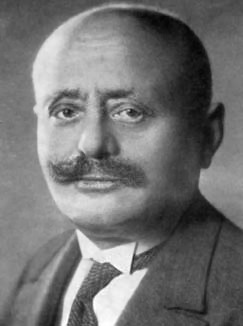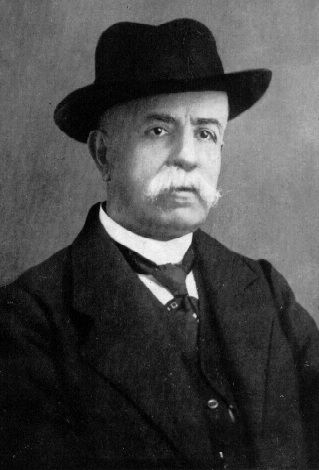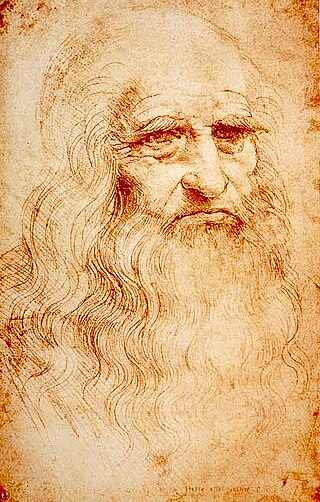
Enrico Bombieri is an Italian mathematician, known for his work in analytic number theory, Diophantine geometry, complex analysis, and group theory. Bombieri is currently professor emeritus in the School of Mathematics at the Institute for Advanced Study in Princeton, New Jersey. Bombieri won the Fields Medal in 1974 for his work on the large sieve and its application to the distribution of prime numbers.

Guido Fubini was an Italian mathematician, known for Fubini's theorem and the Fubini–Study metric.

Ulisse Dini was an Italian mathematician and politician, born in Pisa. He is known for his contributions to real analysis, partly collected in his book "Fondamenti per la teorica delle funzioni di variabili reali".

The University of Pisa is a public research university in Pisa, Italy. Founded in 1343, it is one of the oldest universities in Europe. Together with Scuola Normale Superiore di Pisa and Sant'Anna School of Advanced Studies, it is part of the Pisa University System.

The University of Florence is an Italian public research university located in Florence, Italy. It comprises 12 schools and has around 50,000 students enrolled.

Gregorio Ricci-Curbastro was an Italian mathematician. He is most famous as the discoverer of tensor calculus.

The Scuola Normale Superiore in Pisa is a public university institution in Pisa and Florence, Tuscany, Italy, currently attended by about 600 undergraduate and postgraduate (PhD) students. Together with the University of Pisa and Sant'Anna School of Advanced Studies, it is part of the Pisa University System.

Cesare Arzelà was an Italian mathematician who taught at the University of Bologna and is recognized for his contributions in the theory of functions, particularly for his characterization of sequences of continuous functions, generalizing the one given earlier by Giulio Ascoli in the Arzelà–Ascoli theorem.
Giulio Ascoli was a Jewish-Italian mathematician. He was a student of the Scuola Normale di Pisa, where he graduated in 1868.

The Orto Botanico di Firenze, also known as the Giardino dei Semplici, the "Garden of simples", is a botanical garden maintained by the University of Florence. It is located at Via Micheli, 3, Florence, Italy, and open weekday mornings.

The Giardino Bardini is an Italian Renaissance garden of the Villa Bardini in the hilly part of Oltrarno, offering views of Florence, Italy.

Francesco Pona was an Italian medical doctor, philosopher, Marinist poet and writer from Verona, whose works ranged from scientific treatises and history to poetry and plays.

The Domus Galilaeana is a cultural and scientific institute and library, dedicated to the history of science, located in via Santa Maria #26, in Pisa, region of Tuscany, Italy. Currently, the Domus Galilaeana houses a library with more than 40,000 books and important files relating to scientists of the 20th century.

Science and technology in Italy has a long presence, from the Roman era and the Renaissance. Through the centuries, it has made many significant inventions and discoveries in biology, physics, chemistry, mathematics, astronomy, and other sciences. In 2019, Italy was the world's sixth-highest producer of scientific articles, publishing more than 155,000 documents. From 1996 to 2000, it published two million. It ranked 26th in the Global Innovation Index for 2024.

Ostilio Ricci da Fermo (1540–1603) was an Italian mathematician.

Enrico Giusti was an Italian mathematician mainly known for his contributions to the fields of calculus of variations, regularity theory of partial differential equations, minimal surfaces and history of mathematics. He was professor of mathematics at the Università di Firenze; he also taught and conducted research at the Australian National University at Canberra, at the Stanford University and at the University of California, Berkeley. After retirement, he devoted himself to the managing of the "Giardino di Archimede", a museum entirely dedicated to mathematics and its applications. Giusti was also the editor-in-chief of the international journal dedicated to the history of mathematics Bollettino di storia delle scienze matematiche.
Antonio Nardi (1598-1648?) was a Tuscan man of letters known for his geometrical work with Galileo Galilei and his disciples, Michelangelo Ricci and Evangelista Torricelli. He is also the author of the Scene, a sprawling manuscript work that covers philosophy, physics, ethics, and literature in addition to mathematics.

The Reale Museo di Fisica e Storia Naturale was an Italian museum founded on 22 February 1775 in Florence that survived until 1878, when its collections were split up in various Florentine museums.

Joseph Goedenhuyze or Goedenhuize was a Flemish botanist and naturalist, active in the court of the Grand Duchy of Tuscany. He was also known by the Italian name Giuseppe Casabona or more rarely Giuseppe Benincasa




















